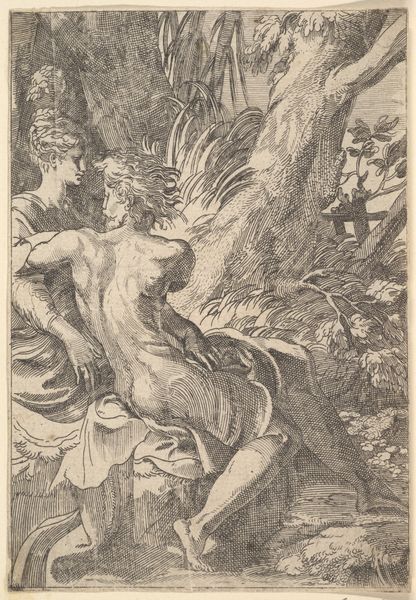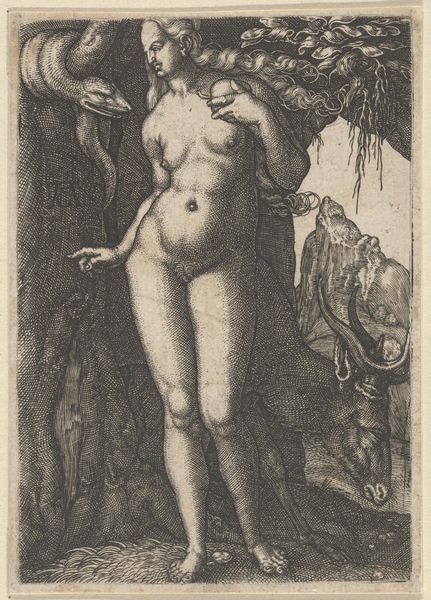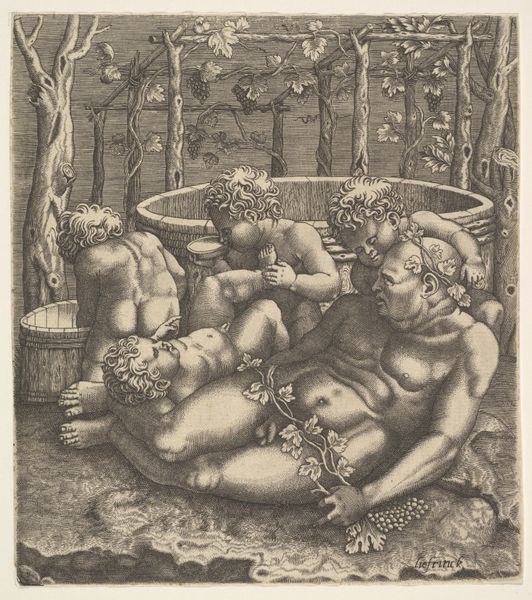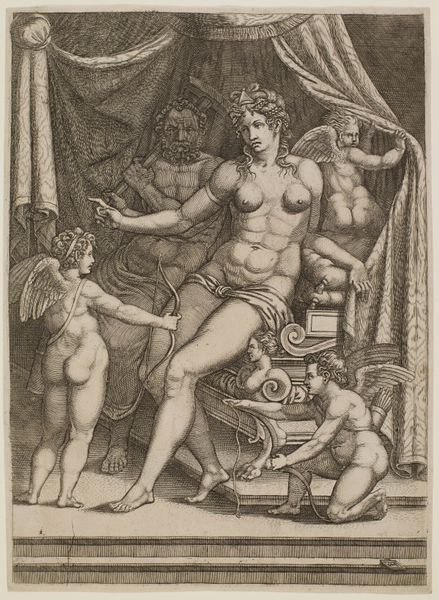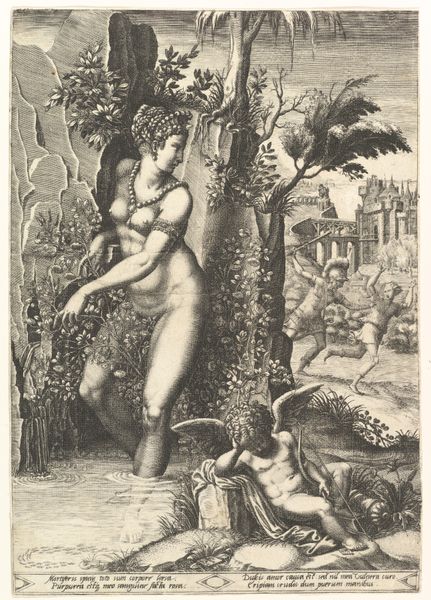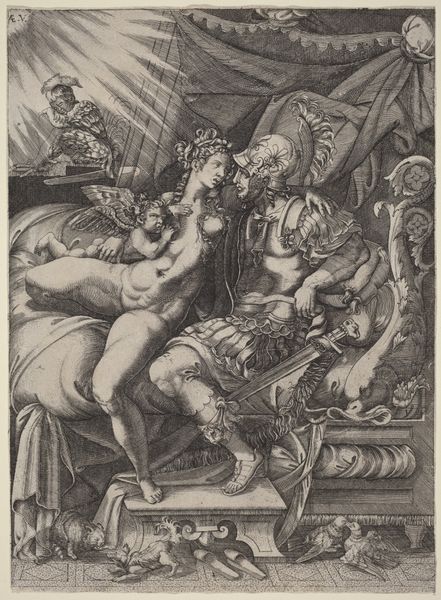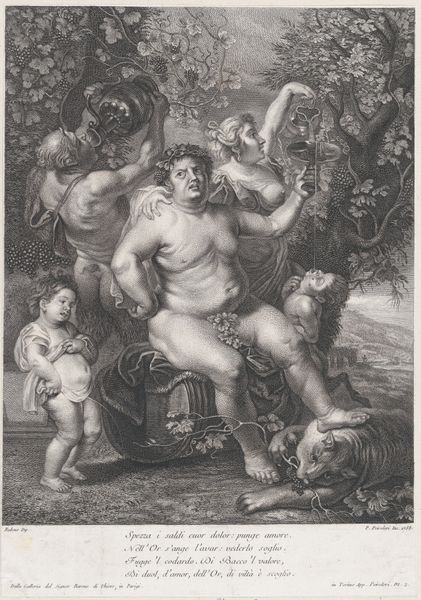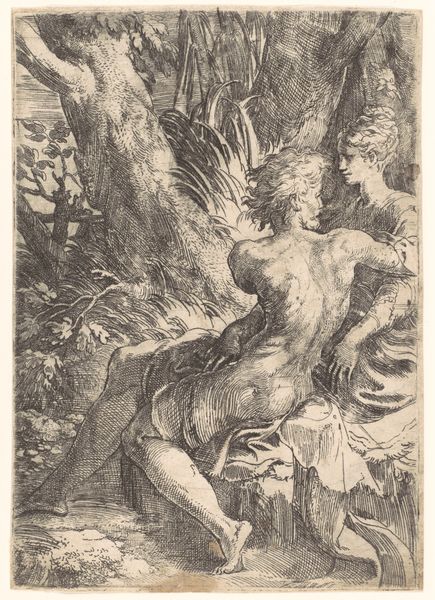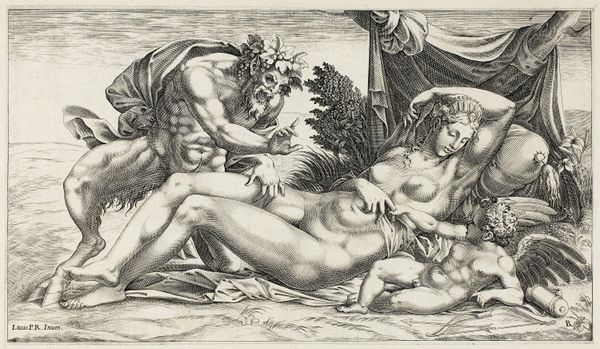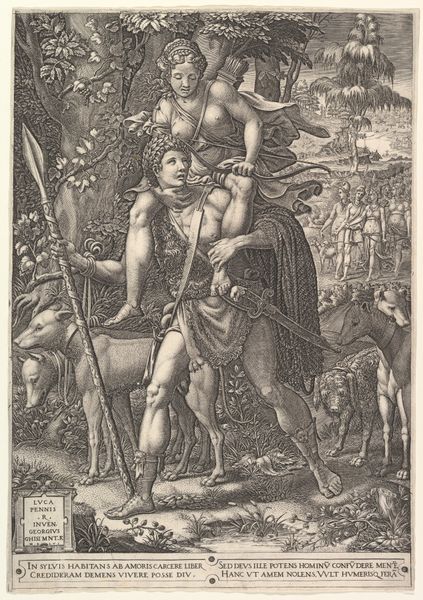
drawing, print, engraving
#
drawing
#
allegory
# print
#
mannerism
#
figuration
#
form
#
history-painting
#
italian-renaissance
#
nude
#
engraving
Dimensions: Sheet: 12 3/8 x 8 13/16 in. (31.5 x 22.4 cm)
Copyright: Public Domain
Curator: I find this print strikingly disturbing; there’s a real sense of unease communicated by the figures. Editor: You're right, the composition certainly contributes to that. We’re looking at “Susanna and the Elders,” an engraving by René Boyvin, likely produced between 1525 and 1598, and now part of the collection at the Metropolitan Museum of Art. It's an interpretation of a biblical scene rendered with Mannerist flair. What strikes you formally about the piece? Curator: The bodies are, let’s say, highly stylized, even exaggerated, to an unnatural degree; Susanna's posture feels simultaneously defensive and vulnerable. And the density of the etched lines amplifies the dramatic tension and heightens the emotionality in the figures’ encounter. Editor: Agreed. It's an interesting rendering of Susanna's story in print, since prints at this time provided an increasingly accessible and reproducible form of art, thus democratizing access to images, albeit within very clear socio-economic and religious confines. Consider the economic value chain here, the materials, and Boyvin’s labor; also, to what degree could common people really "own" Susanna's image, and what interpretations might they make? Curator: An intriguing proposition. If you shift your attention to Boyvin’s technique, there's something visually compelling in the contrast between the finely detailed rendering of Susanna's skin, the rougher textures of the elders' robes, and the intricate rendering of the surrounding garden, all achieved through incredibly fine lines. It invites close looking, almost demanding that the viewer consider the interplay between light, shadow, and form, ultimately to elicit not a moral message, but to underscore the drama of the moment itself. Editor: I appreciate your focus on technique there. I’m just interested in where these engravings were made, by whom, and how they reached public consumption, thus enabling dissemination of stories such as Susanna's. How was the act of engraving valued alongside painting at that time, and what considerations impacted an engraver like Boyvin? Curator: It’s clear this engraving allowed for Boyvin's stylistic ideas, as inspired by Italian Renaissance art, to be circulated beyond a geographically limited viewership. What really endures, however, is its artful synthesis of form and content, offering viewers an arresting and emotionally complex encounter. Editor: A perfect ending note. We are left here not simply to witness a biblical tale, but also to meditate on art's capacity to capture raw, multifaceted experiences and their connection to their physical, social origins.
Comments
No comments
Be the first to comment and join the conversation on the ultimate creative platform.

